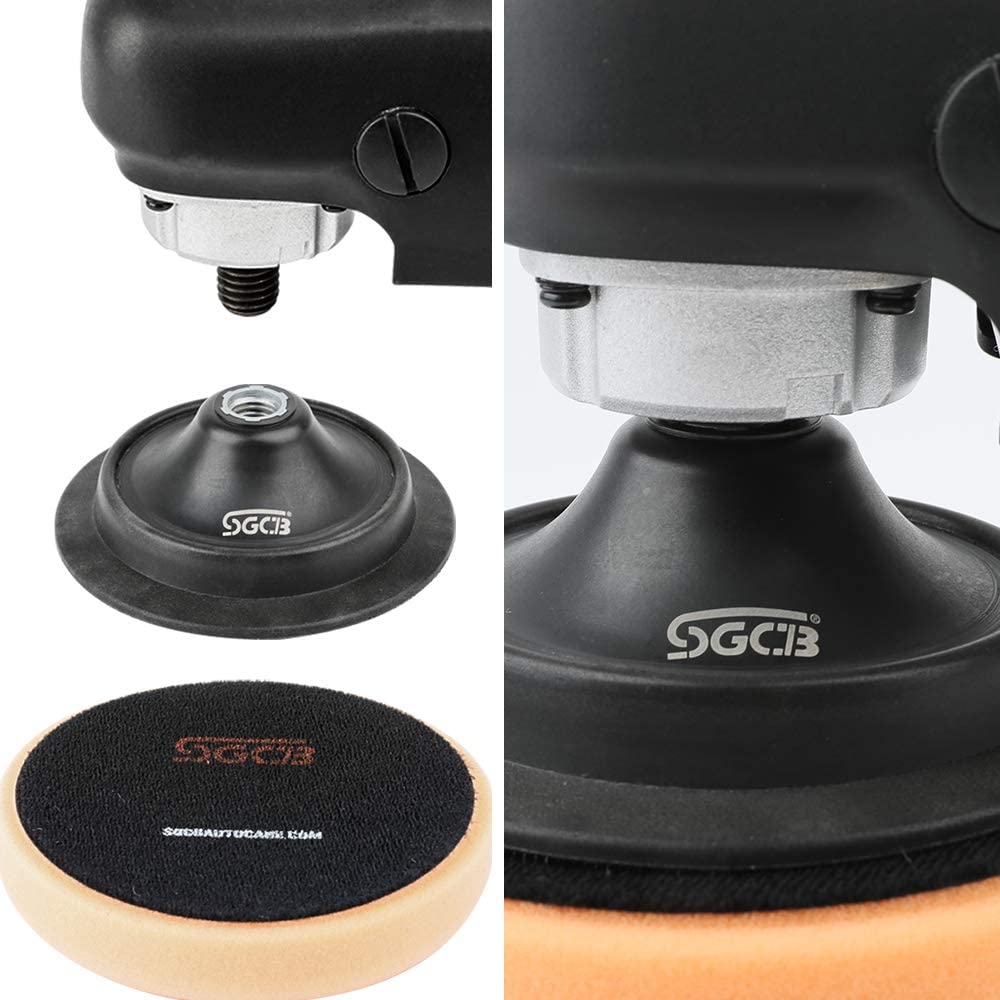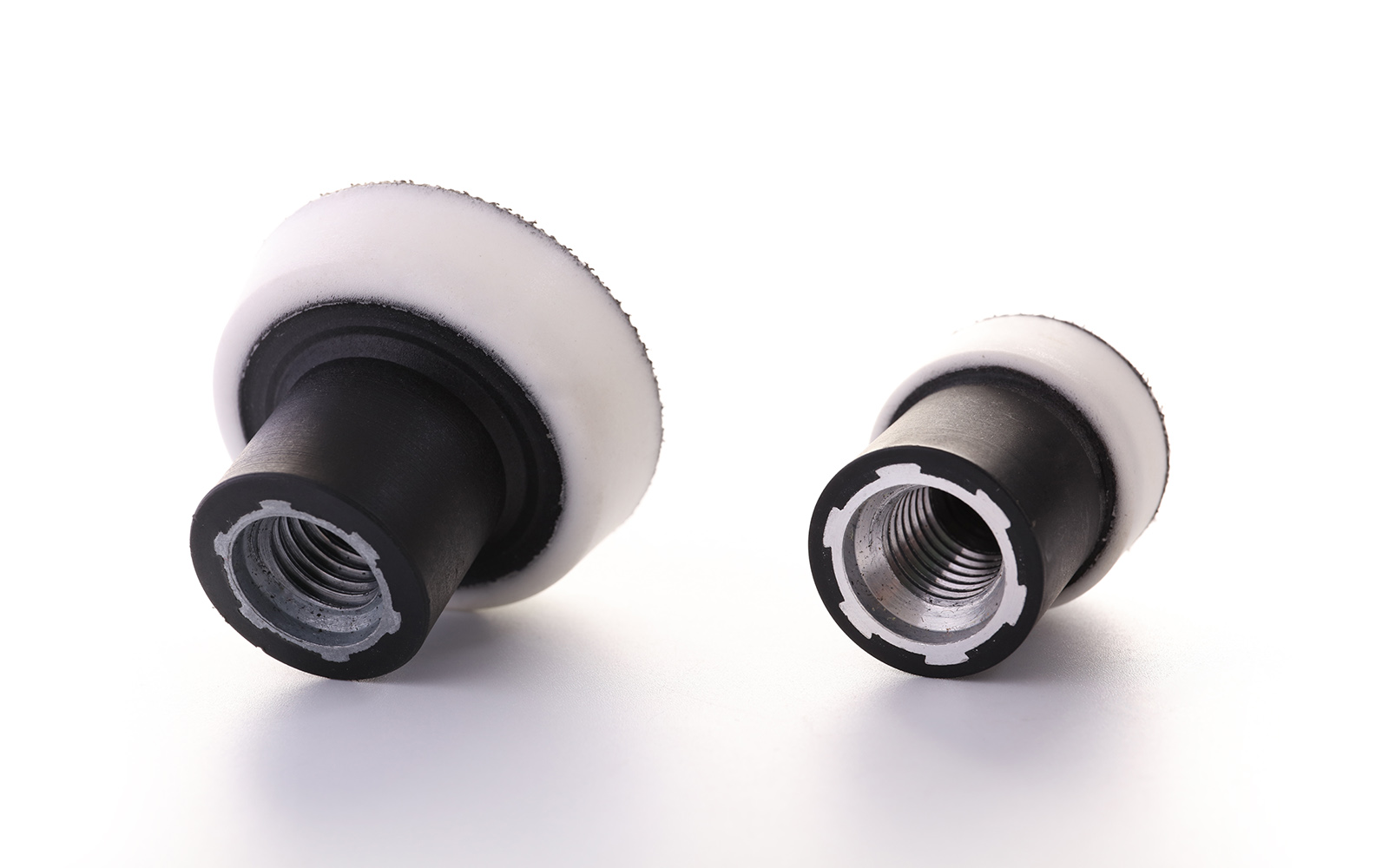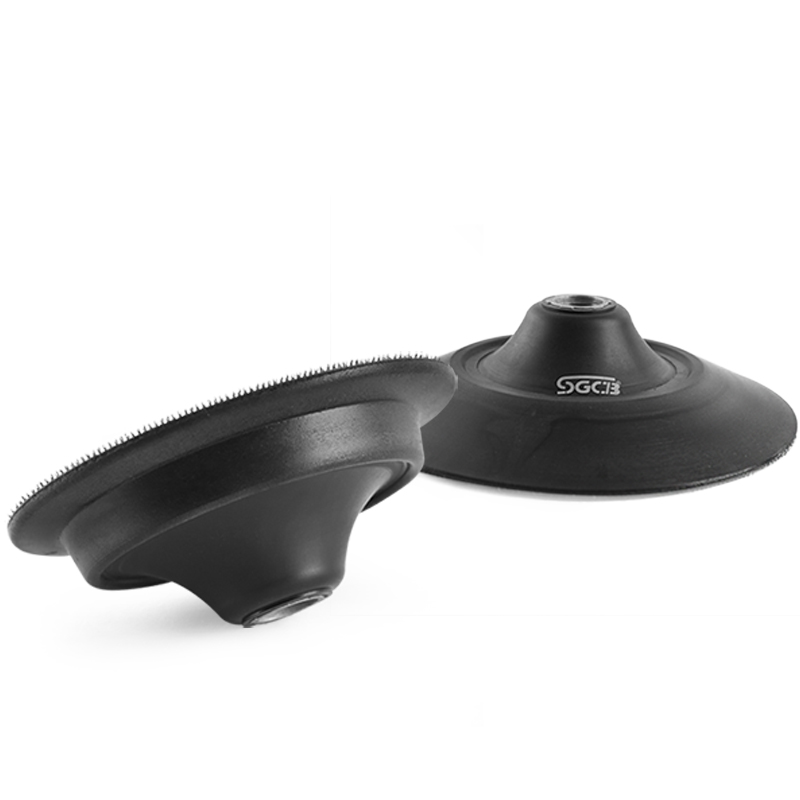Tune correction of color images
Abstract : Through the analysis and comparison of the tonal range of color image manuscripts and printed reproductions, the reason why the tone correction should be taken into account in the image processing of desktop printing system is proposed. In combination with the application of Photoshop software, the tone reduction and order are proposed. Adjust the general method of curve adjustment. Color correction
The backing plate/ backing pad is a medium tool used for connecting the polisher and buffing pad. With the premium hook and loop back, it can grip the polishing pad firmly so that you can finish the car paint polishing.
1 Introduction
The three indicators for evaluating image copy quality are tone, color, and sharpness. Among them, the reproduction of the tone is most valued by people. Due to the constraints of various printing conditions, the color prints are limited to a brightness range that is much smaller than that of the original (color reversal film). Therefore, how to make the image tone optimal in a limited brightness range Reproduction is always a difficult point in color printing. With the increasing popularity of color desktop publishing systems, people can use image processing software to adjust the image. The tone reproduction of color images seems to be easy to accomplish. However, the actual situation is not the case. Since the density of a printed copy is generally smaller than that of the original, the reproduction of the original must be greatly reduced after copying. The color display shows images with a wide range of brightness, and the corresponding tonal compression is smaller and less noticeable. However, when the gradation of the image is limited to a small print density range that reflects variations in the brightness of the original, the proportion of the compression is magnified, so that the visual impression produced by the color display screen and the reproduced image of the printed matter is greatly increased. The difference. Therefore, the adjustment of image gradation must not rely solely on observing the display effect of the color display screen, but must carefully and fully analyze the emphasis of the reproduction of the original gradation and the content and subject represented by the original, and based on this, perform the adjustment on the tone. Correction.
2, tone correction correction tone actually contains two aspects. One is to perform artistic processing on the gradation of manuscripts to meet the subjective requirements of customers for tone reproduction, such as the adjustment of the gradation of incorrectly photographed photographs. The second is to compensate for the influence of the printing process on the reproduction of the tone. From manuscripts to prints, the transmission of tones undergoes a series of technological processes. Due to the limitations of various conditions, the transmission of the steps is non-linear. In order to obtain a satisfactory reproduction of tones, it must be compensated. Tonal correction usually takes a grading compression and adjustment approach. The gradation compression is to make the gradation range of the manuscript suitable for the gradation range that the printing product can express under the printing condition.
The compression curve differs depending on the characteristics of the printing device, the printed material, and the original. Adjusting the tone is to adjust the tone curve appropriately for the ever-changing manuscript, change the shape of the tone curve, increase or decrease the contrast and details of different parts of the image to compensate the nonlinear change of the image copying process, so as to satisfy the copying The request. In the image processing software Photoshop, the curve compression and adjustment are mainly achieved by setting the highlight/dark point and adjusting the Curve curve. It can also be achieved in a small area by adjusting the brightness/contrast tool.
2.1 Setting of black and white fields (setting of highlights/dark points) Since small dots (1% to 5%) will be lost during printing, and more than 95% of dots will become solid, the first thing to do is select the image The highlights (the brightest points in the detail) and the darkest points (the darkest points in the details) are in the printable range. The highlight and shadow tools are used for high/dark adjustment, also known as black/white calibration. Setting the highlight/dark point accurately shows the tone levels and details of the original.
Correctly setting high/dark tone points is a key factor for successful replication. High light spots directly affect the tone levels of high-profile and mid-tones, and the human eye is very sensitive to high-profile brightness changes. Correctly setting the highlights allows the highlights in the original to be reproduced. In addition, the setting of highlights must also allow color reproduction to achieve a neutral gray balance. The setting principle of the dark tone is basically the same as that of the highlight. The difference is that we often determine the high light spot of the image by the naked eye, but it is not so convenient to set the dark tone point of the image correctly, generally it needs to be judged by a certain instrument. The correct setting of dark spots not only reflects the level of the image better, but also corrects the color shift of the original. The best way to set the black and white field in Photoshop is to use the Eyedropper highlight and shadow method, by selecting Image/Adjust/Curves and double clicking on the highlight Eyedropper to get the ColourPicker, which can be correctly reproduced on the print in the CMYK box. The dot value (such as coated paper printing: C5%, M3%, Y3%, K0%), then click on the light spot with the level of detail on the image to switch the dot to a printable range. The dark setting can be done with a darkened pipette.
2.2 Curves Curve Adjustment In Photoshop, the best way to adjust the tone of an image is to use the Curves dialog box. Execute the Image/Adjust/Curves command, the curve dialog box appears, select the CMYK channel, and change the shape of the curve by clicking and dragging. This curve describes the relationship between the unadjusted input value (gray value or dot coverage %) and the adjusted output value. The adjustment of the Curve curve should be made for the characteristics of different manuscripts. If the original tone is normal, the Curve curve can be adjusted linearly. That is, as shown in line 1 in Figure 4, the highlights of the original manuscript are poor in the high-profile level and the contrast is small. Therefore, when adjusting the tone, the adjustment should be based on high school adjustment to improve the high-profile level, contrast and color saturation. Degree, the adjusted curve is shown in Fig. 4 as the adjustment curve of Fig. 4 on the 2-line. From the adjusted curve, it can be seen that the high-profile layer is rich, the contrast is increased, and the color is deepened. In the manuscript of the dark tone level, the dark tone level is poor, the contrast is small, and the whole is dark. To do this, it is necessary to draw a dark tone and contrast the levels. As shown in Figure 3, line 3 shows. The adjusted image tone level is rich, the color is bright, and the contrast is also increased.
3 Conclusion: In summary, in the desktop printing system image processing, we only according to the characteristics of the tone distribution of the original tone, combined with the observation of the color display (must undergo color correction) display effect, the image of the tone Compression and correction are needed to get the ideal print.
Separated images often require a certain amount of correction to meet the requirements. There are many correction tools in Photoshop software, we usually use the following:
(1) Use the Curves curve to correct the high and low tone values ​​of the image. Taking into account the tone and gray balance of the entire image, the Curves curve is powerful, and the loss of the tone of the image is very small. I hope readers like it. For example, the midtones of the image are dark and we can use curves to adjust.
(2) Use Selective Color to select the color correction tool to make necessary adjustments to the local color patches in the figure.
For example, we want to increase the saturation of the blue block in the image, which can be adjusted as shown in Figure 7. For continuous manuscripts with rich color hierarchies (more transitional gradients), readers are expected to use this item with caution. The amount of adjustment should not be too large. Otherwise, faults will occur and the continuity of the tone will be undermined.
(3) Use sharpening tools to improve the sharpness of the image. There are 4 sharpening methods under Filter/Sharpen. Among them, Unsharp Mask has the strongest function. Amount represents the amount of sharpening (intensity), Radius is the number of pixels that participate in sharpening, and Threshold represents the starting point of sharpening. The reader can modify the 3 parameters according to the screen display. Ensure that printed images are clear, natural, and properly grained. Of course, the reader must first ensure that his monitor is focused properly.
The school's finished image should be bright and dark in the normal range, and the middle tone should meet the visual needs of the human eye, faithfully restore the gray balance. By doing this, you can say that the map is done. 


polishing backing plate,backing plate,da backing plate,5 backing plate,da backing plate,backing plate polisher
SGCB COMPANY LIMITED , https://www.sgcbautocare.com
